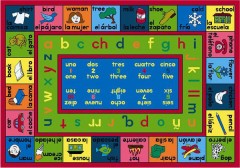By Katherine Leal Unmuth
Latino EdBeat
Many suburban Chicago school districts are failing to provide bilingual education programs as required by state law, a recent Catalyst Chicago analysis shows.

Illinois law requires that schools with 20 or more students sharing the same native language must offer a bilingual education program to qualified students. Catalyst found that between 2009 and 2011, of 58 suburban districts visited by monitors, about 40 percent–or 22 districts– failed to provide a bilingual program. None met all requirements for serving English language learners. These results are important because the majority of the state’s Latinos now live in the suburbs.
According to coverage by the Chicago News Cooperative:
“Compliance problems included bilingual courses taught by teachers who lacked required language or subject-matter certification, classes with substandard content, and failure to make yearly assessments of how well students are learning English.“
Many of the suburbs struggle to find enough certified bilingual teachers. Some have turned to sheltered English instruction for English language learners. There are some successful dual-language instruction programs, but teacher shortages limit the expansion of those.
“There is a lot of hardship on some districts to comply where there are newer populations” of English-language learners, Reyna Hernandez told the Chicago News Cooperative. She is assistant superintendent of the Center for Language and Early Childhood Development at the Illinois State Board of Education.
Catalyst reports that the state is considering changes that could reduce the number of schools requiring certified bilingual teachers and that would reduce instruction in the native language taking place in bilingual programs.
If you’d like to learn more about the state of bilingual education in Illinois, Catalyst has posted a series of articles on the topic online. The stories point out issues with bilingual programs in the Chicago Public Schools. Namely, that some children aren’t becoming English proficient even after spending years in the program. So even when bilingual education programs are offered as required by law, they’re not necessarily without flaws.
You can check in your state whether districts are meeting all requirements for serving English language learners. The state department of education should have this information.
Also, if your state offers bilingual classes, is there a shortage of qualified teachers and–if so–how is the shortage being addressed? Some districts have been known to bring teachers from Puerto Rico, Mexico or Spain to teach students. Others offer pay stipends of several thousand dollars to entice applicants.




